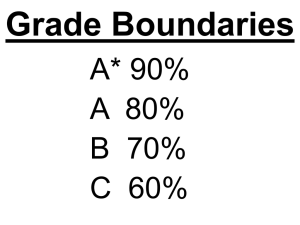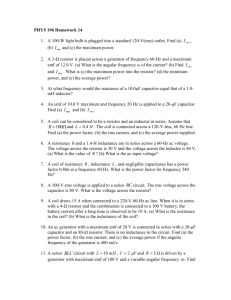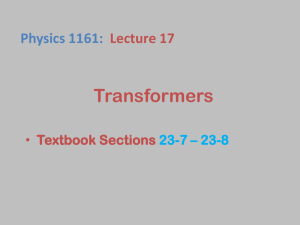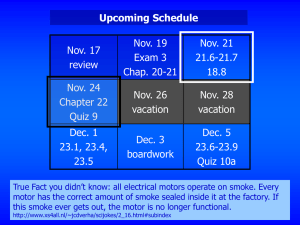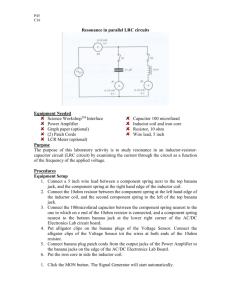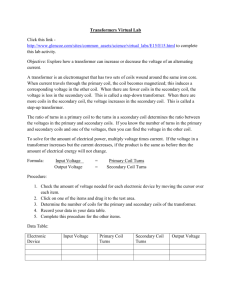ACCTa
advertisement
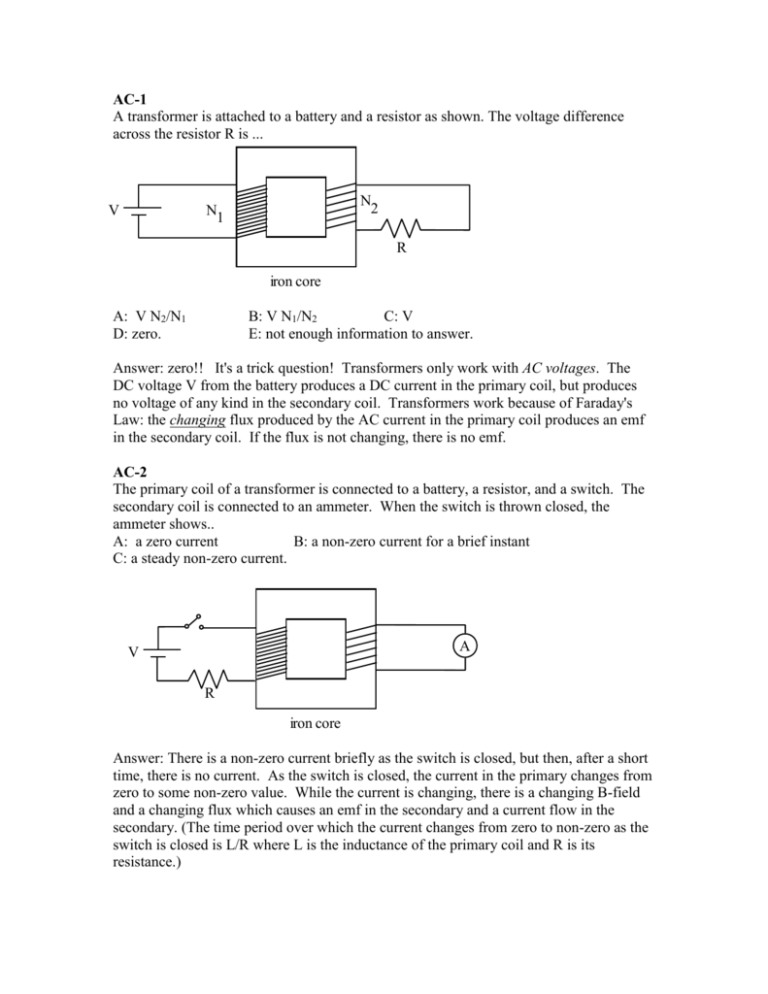
AC-1 A transformer is attached to a battery and a resistor as shown. The voltage difference across the resistor R is ... V N2 N1 R iron core A: V N2/N1 D: zero. B: V N1/N2 C: V E: not enough information to answer. Answer: zero!! It's a trick question! Transformers only work with AC voltages. The DC voltage V from the battery produces a DC current in the primary coil, but produces no voltage of any kind in the secondary coil. Transformers work because of Faraday's Law: the changing flux produced by the AC current in the primary coil produces an emf in the secondary coil. If the flux is not changing, there is no emf. AC-2 The primary coil of a transformer is connected to a battery, a resistor, and a switch. The secondary coil is connected to an ammeter. When the switch is thrown closed, the ammeter shows.. A: a zero current B: a non-zero current for a brief instant C: a steady non-zero current. A V R iron core Answer: There is a non-zero current briefly as the switch is closed, but then, after a short time, there is no current. As the switch is closed, the current in the primary changes from zero to some non-zero value. While the current is changing, there is a changing B-field and a changing flux which causes an emf in the secondary and a current flow in the secondary. (The time period over which the current changes from zero to non-zero as the switch is closed is L/R where L is the inductance of the primary coil and R is its resistance.) AC-3. A step-down transformer is attached to an AC voltage source and a resistor as shown. How does the current in the resistor IR compare to the current in the drawn from the AC source Iinput? (With AC circuits, we always use rms values of I and V.) A) IR > Iin B) IR < Iin C) IR = Iin Iin IR D) Depends on the value of Iin Answer: IR > Iin. For a step-down transformer, the voltage is stepped down. But power in = power out, so IPVP = ISVS, so when the voltage is stepped down, the current must be stepped up. AC-4. A 600W hairdryer is attached to 120VAC circuit. What is the peak current through the hairdryer (to within 5%)? A: 10A B: 7A C: 5A Answer: Power P = IV. This formula works fine with Pavg = Irms Vrms. So Irms = Pavg/Vrms = 600W/120V = 5 A (rms current). The peak current is (2)1/2 larger than the rms value. Peak current = (2)1/2 5A is about 7A. AC-5. An electrical engineer at a power plant wants to reduce the energy wasted during power transmission from the plant to the city. The power output Po=IV of the plant is fixed at 100MW. The engineer decides to double voltage V. By what factor does the power lost in the cable (Plost=I2Rcable) decrease? (Hint: if P=IV is fixed, when V goes up, I goes down.) A: No decrease Rcable VAC B: factor of 2 decrease I C: factor of 4 decrease Rcity D: factor of 8 decrease Answer: factor of 4 decrease. When V increases by 2, I decreases by 2 (since P=IV=constant). When I decrease by 2, I2 decreases by a factor of 4, Plost=I2Rcable decreases by 4. The formula P = V2/R is not useful in this case. In the formula P=V2/R, V is the voltage difference across the resistor R. But in this problem the voltage difference across Rcable is not known.
